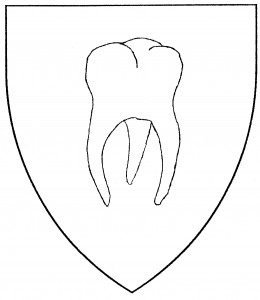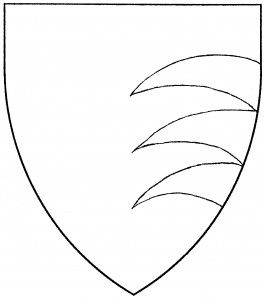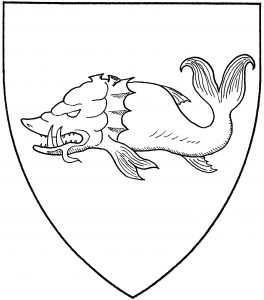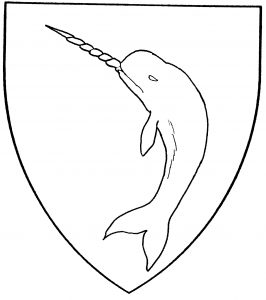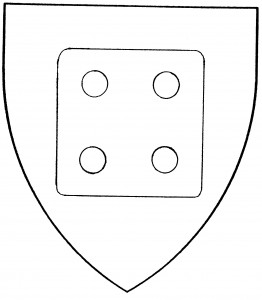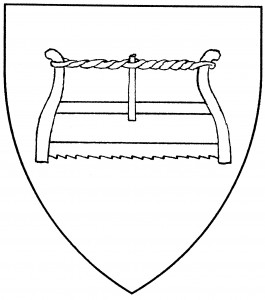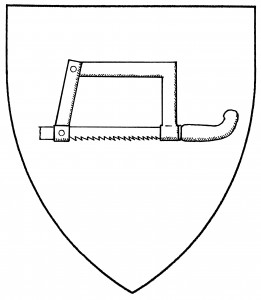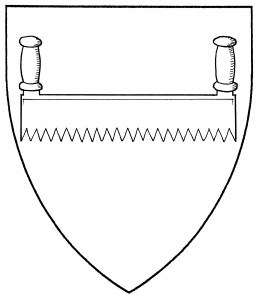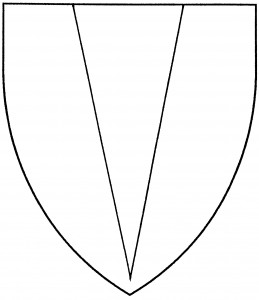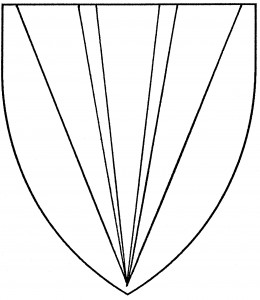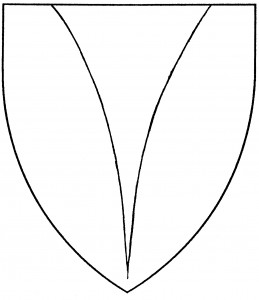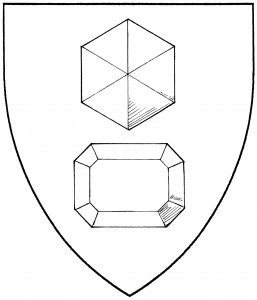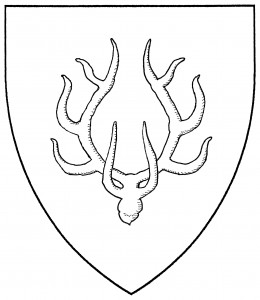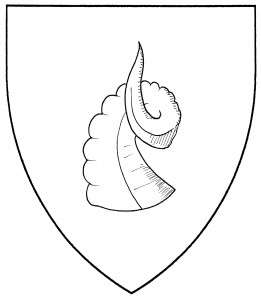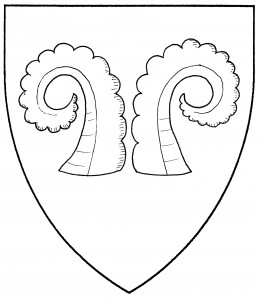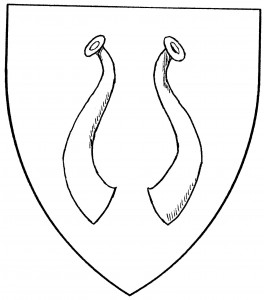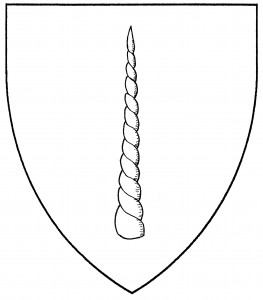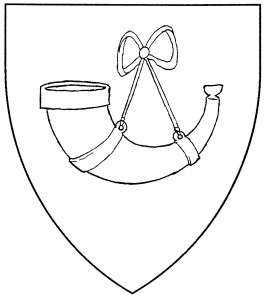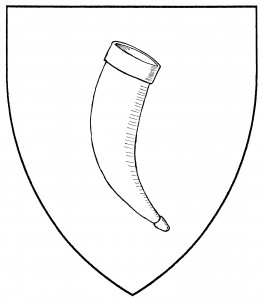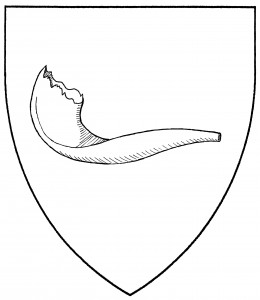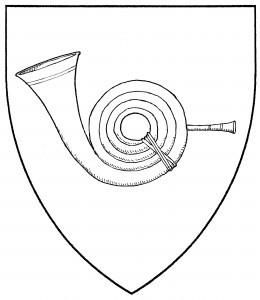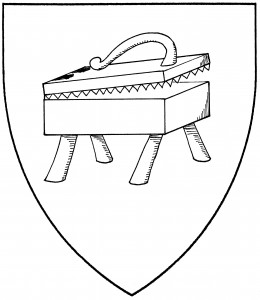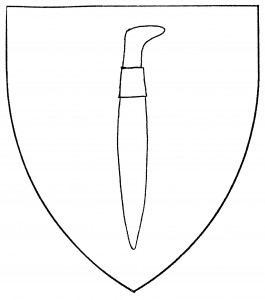A tooth is a bone-like structure set in the jaws of most vertebrates, used for biting and crushing food, displaying threats, and smiling. In mundane heraldry, the tooth is normally depicted as a human molar, with the roots extending to base; it is also blazoned (somewhat confusingly) as a “fanged tooth” [Franklyn 130]. It’s found in the canting arms (Dutch kies, “molar”) of Kies or Kees, as seen in a stained glass window dated c.1594, in the Sint-Janskirk (Church of St. John Baptist) in Gouda, Netherlands.
A tooth that comes to a point may also be called a “fang”; such fangs have their points to base by Society default. The fang is visually equivalent to a drinking horn; it has been disallowed for Society heraldry, due to its lack of ready identifiability.
A similar charge, which seems to be unique to the Society, is the “tusk”: an elephant’s tooth, couped and with point to chief by default. The tusk is no longer permitted to be registered.
“Wolves’ teeth” are a highly stylized German charge, consisting of three or four curved points issuant from the edge of the shield. They usually issue from the flanks, as in the arms of Keudel, 1605; we’ve an example of them issuant from base, in the arms of Schinsky, 1605 [Siebmacher 135, 28]. Having wolves’ teeth issue from other points, such as from chief, is treated as a step from period practice, as is inverting them. The point at which the teeth enter the shield, as well as the number of teeth, are always blazoned; the teeth should be drawn touching, or nearly so, at their bases. The illustration shows three wolves’ teeth issuant from sinister.
Margery Kent of York bears: Purpure, three teeth argent. [Drawn as molars]
Octa Bluetooth bears: Gyronny gules and argent, a bear’s tooth azure.
Cahan Kyle bears: Azure, two tusks, tips crossed in saltire Or.
Duncan Bruce of Logan bears: Or, three wolves’ teeth issuant from sinister sable.
